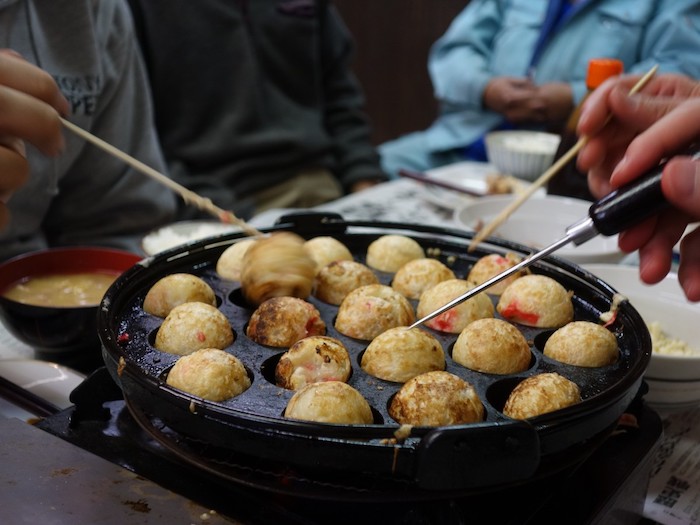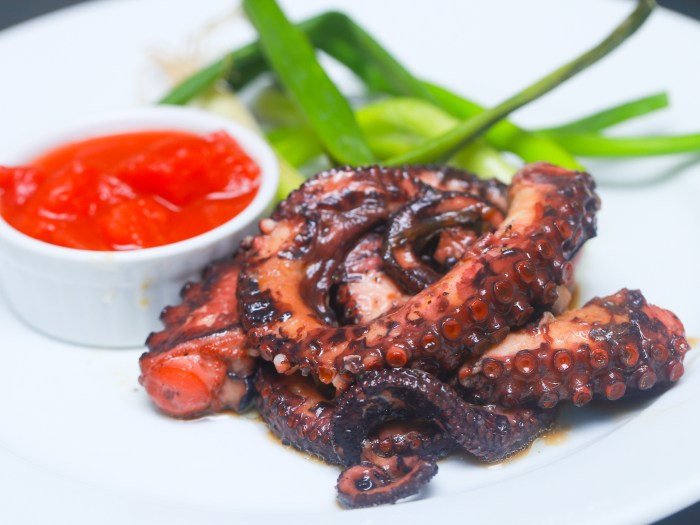How to cook a octopus japanese style – Cooking octopus in Japanese style is a delicate and flavorful process that requires attention to detail and respect for the ingredients. The key to creating a delicious octopus dish lies in the preparation and cooking techniques used. In this comprehensive article, we will explore the steps involved in cooking octopus Japanese style, as well as provide tips, solutions, and detailed information to help you master this culinary art.
Tips for Cooking Octopus

- Start by selecting a fresh octopus with firm, shiny skin and a pleasant sea smell.
- Tenderize the octopus by freezing it before cooking to break down the tough muscle fibers.
- Use a gentle cooking method such as simmering or braising to ensure a tender and flavorful result.
- Infuse Japanese flavors such as soy sauce, mirin, and dashi broth to enhance the taste of the octopus.
What Do You Mean by Japanese Style?

Cooking octopus Japanese style involves using traditional Japanese ingredients and cooking techniques to create a dish that is both delicious and authentic. Japanese cuisine is known for its emphasis on fresh, seasonal ingredients and simple yet flavorful dishes. By incorporating these principles into your octopus cooking, you can create a dish that is true to the essence of Japanese cuisine.
What Is Known About Cooking Octopus Japanese Style? : How To Cook A Octopus Japanese Style
- Octopus is a popular ingredient in Japanese cuisine, often served in dishes such as takoyaki (octopus balls) and sushi.
- Japanese chefs have perfected the art of cooking octopus to achieve a tender and flavorful result.
- Traditional Japanese cooking techniques such as simmering, grilling, and braising are commonly used to prepare octopus dishes.
Solution for Cooking Octopus Japanese Style
To cook octopus Japanese style, follow these steps:
- Start by cleaning the octopus and removing the head and beak.
- Tenderize the octopus by freezing it for a few hours.
- Cook the octopus in a pot of boiling water with aromatics such as ginger and garlic.
- Simmer the octopus until tender, then remove from the pot and let it cool.
- Slice the octopus and serve with a drizzle of soy sauce, sesame oil, and green onions.
Detailed Information on Cooking Octopus Japanese Style
Cooking octopus Japanese style requires attention to detail and precision. It is important to clean the octopus thoroughly and remove any tough membranes or beak before cooking. Freezing the octopus helps to break down the tough muscle fibers and tenderize the meat. Cooking the octopus in a flavorful broth infused with traditional Japanese ingredients enhances the taste and texture of the dish.
When it comes to decorating the classroom for spring, one of the best ways to bring in the season is by focusing on the windows. By utilizing colorful paper cutouts, hanging mobiles, or even simple flower garlands, you can create a cheerful and inviting atmosphere. For more ideas on how to decorate classroom springtime window, check out this helpful guide: how to decorate classroom springtime window.
Describing in Depth the Cooking Process
To cook octopus Japanese style, start by cleaning the octopus and removing the head and beak. Tenderize the octopus by freezing it for a few hours, then cook it in a pot of boiling water with aromatics such as ginger and garlic. Simmer the octopus until tender, then remove from the pot and let it cool. Slice the octopus and serve with a drizzle of soy sauce, sesame oil, and green onions for a delicious and authentic Japanese dish.
Conclusion

Cooking octopus Japanese style is a rewarding and delicious experience that allows you to explore the flavors and techniques of traditional Japanese cuisine. By following the tips and techniques Artikeld in this article, you can create a flavorful and tender octopus dish that is sure to impress your friends and family. Embrace the art of Japanese cooking and enjoy the rich and savory flavors of octopus prepared in the traditional Japanese style.
When it comes to decorating a classroom for springtime, one of the key areas to focus on is the windows. Adding a touch of spring to the windows can instantly brighten up the space and create a cheerful atmosphere for students. To learn more about how to decorate classroom springtime window, you can check out this helpful guide here.
Incorporating elements like colorful window clings, paper flowers, or even a spring-themed border can make a big impact on the overall look of the classroom.
FAQs
- Can I use frozen octopus for cooking Japanese style?
- Yes, frozen octopus can be used for cooking Japanese style, but fresh octopus is preferred for the best flavor and texture.
- What are some traditional Japanese ingredients used in cooking octopus?
- Traditional Japanese ingredients for cooking octopus include soy sauce, mirin, dashi broth, and sesame oil.
- How long does it take to cook octopus Japanese style?
- Cooking octopus Japanese style usually takes about 1-2 hours, depending on the size and tenderness of the octopus.
- Can I grill octopus for a different flavor profile?
- Yes, grilling octopus is another popular cooking method in Japanese cuisine that imparts a smoky and charred flavor to the dish.
- Are there any alternative cooking methods for octopus?
- In addition to simmering and braising, you can also try marinating and grilling octopus for a unique and flavorful twist on traditional Japanese octopus dishes.
